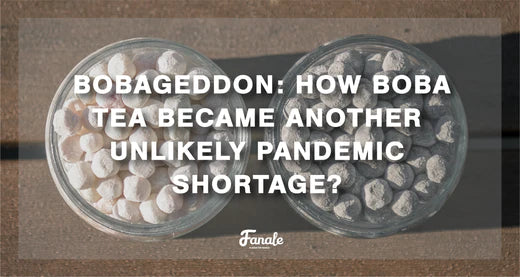It’s been more than two years since the COVID 19 was first discovered. Many aspects of our lives have experienced a paradigm shift as a result.
On the work front, many lost their jobs and were the subject of severe pay cuts, forcing them to find means to earn money online or side hustles to bolster their income.
On the business side of things, the pandemic upended global supply chains, creating commodity scarcities and causing a price surge. Increasingly stricter COVID-19 restrictions, labor shortages, and tighter border control then resulted in difficulty in meeting increased demands for goods and services. From a shortage of chips used to manufacture phones to the food we were used to getting at affordable prices, every commodity was seemingly affected by disruptions to the global supply chain.
Interestingly enough, the world faced another unexpected pandemic shortage. Boba.
Termed ‘Bobageddon’, a worldwide tapioca pearl shortage occurred unexpectedly. Who would’ve thought that boba was capable of running out? While many giggled at the randomness of such an occurrence, we certainly did not.
Boba tea shops across the world were severely affected by said event, with many still reeling from the effects of the devastation the pandemic brought to the global supply chain.
In this article, let’s take a deep dive into how Bobageddon has affected the boba industry.
What is boba?
For the uninitiated, here is a quick explanation of what boba is.
Boba—the dark, chewy pearls made of tapioca or cassava are typically found in bubble tea. The beloved tea-based drink originated in Taiwan in the 1980s and has taken the world by storm in recent years.
Boba has many aliases; depending on where you’re from, the drink can be known as bubble tea, boba tea, or simply referred to as boba.
Why was there a boba tea shortage?
The shortage in boba and tapioca starch, the ingredient used to make the pearls, was first reported in 2021 by the San Francisco Chronicles.
Shipments of boba balls and tapioca starch, which come from Taiwan and Thailand, respectively, are facing major delays due to bottlenecks in the Asian-U.S. supply chain.
The shipping lags can be blamed on a poorly-timed combination of pandemic-related logistical issues; dozens of ships are stuck at sea waiting to be unloaded thanks to a lack of labor and equipment to unload them. In this case, the pandemic-caused labor shortages, coupled with increased general demand as consumer spending rebounds, have caused a monthslong maritime pileup at ports in the US.
The shipping delays were also caused by issues on the other end of the world. An unusual drought struck Taiwan, the place where most of the tapioca pearls that end up in the US are produced. The country saw precipitation at its lowest levels in 56 years, causing a government-sanctioned water rationing that lowered the production capacity of all kinds of products, including tapioca pearls.
How long did the boba shortage last?
It’s uncertain how long the tapioca boba shortage lasted in 2021, but businesses like Boba Direct, a Chicago-based supplier of bubble tea products, foresaw that the shortage could last until April that year.
On the other hand, Kung Fu tea, one of the US’ largest bubble tea chains, expects the tapioca shortage to last longer.
Impact of the boba shortage
On the commercial front, businesses faced the possibility of their boba supply running out. On the flip side, there are shops that were less worried because it’s typical to order several months of tapioca pearls supply at once, safeguarding them from the supply issues.
A larger source of concern was hoarding as shops scrambled to buy up pearls as fast as it’s unloaded—a situation that bore an uncanny similarity to how consumers were panic buying and hoarding toilet paper at the beginning of the pandemic.
As boba pearls became more scarce, consumers faced the risk of losing their favorite drink. Abdurahman Sharif of Chi Tea in Chicago shared with NPR that they had to take a flavor off their menu every week simply because they just didn’t have the ingredients.
The pandemic has affected and uprooted countless industries. But despite the setbacks, the boba industry continues to grow in popularity.
Boba tea was reported by Yelp as the most popular delivery item in states like California and Hawaii during the peak of the COVID-19 pandemic. Furthermore, Fortune Business Insights predicts that the industry will experience large growth through 2027.
The shortage may not have hindered celebrating National Bubble Tea Day, but it’s uncertain whether something similar will happen again. While going without boba might not be everyone’s cup of tea, perhaps it’s time for consumers to opt for other toppings like popping boba.
What's next in a post-Bobageddon world?
As the pandemic slowly started to die down, things in the boba world seemed to be taking a turn for the better.
With border restrictions lifting, the flow of imports has returned to normal, and crowds have started to return to the boba tea shops. Things seem to be back to business as usual.
But one can never be sure of what will happen in the future. We can always learn from businesses who did well to futureproof themselves from the detrimental impact of supply chain disruptions. Developing a loyal customer base and order months' worth of boba are just some of the things boba tea franchises can do to protect themselves.



